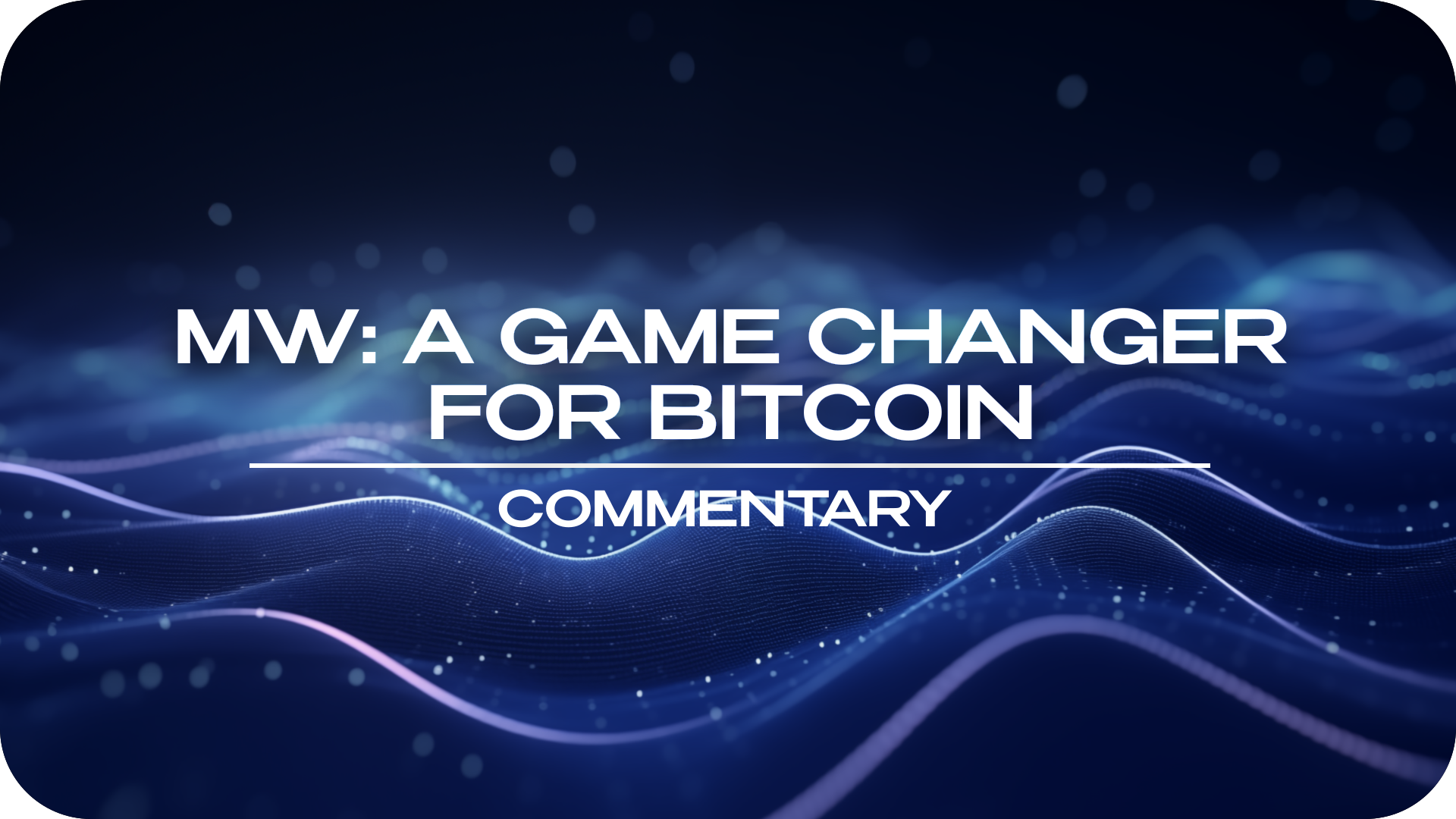
Why Mimblewimble is a Game-Changer for Bitcoin
This headline may seem like hyperbole, but I have a sound basis for making this statement which I will explain. First of all, what must be understood is that Mimblewimble is a gigantic improvement in terms of scalability, privacy, and fungibility. It can be considered a black swan of sorts. The thinking of its creator, Tom Elvis Jedusor, was truly out of the box and something that could not have been anticipated beforehand. To put it into context, let's look at other scaling improvements in Bitcoin and do a comparison with the improvements found in Mimblewimble. Then we'll touch on the fungibility and privacy.
Scalability Improvements
While Segwit increased the effective block size and replaced it with a "block weight" which could be as large as 4 MB, by itself it does not improve scalability. It only increases capacity. It's effectively an accounting change no different than BCH's 8 MB blocks. The reason it can be said that Segwit dramatically improved scalability is because it is a fix to the transaction malleability bug and was required to support a better version of the Lightning Network. Most people don't remember this, but the initial Lightning Network paper was released prior to CLTV, CSV, and Segwit. In the paper, they propose an alternative to Segwit called SIGHASH_NOINPUT, but without either one of these malleability fixes, the Lightning Network is MUCH less effective and in fact requires a trusted third party to operate. To a large extent this is a non-starter for the Lightning Network. Bitcoin Cash never liked the Lightning Network because their idea was just to have as large blocks as needed. In that context there is no need for the Lightning Network in BCH and this would quickly become a scaling nightmare if BCH were to actually be used significantly as BTC full nodes already have a hard time downloading the massive amount of data required to run a full node today. Seen in this light, Segwit was a huge scaling improvement because it enabled a viable form of the Lightning Network. So the market favored Segwit over big blocks. But by how much? Well, the good thing is we can tell exactly how much more valuable it is by looking at the BTC price vs. the BCH + BSV price. At the time of writing, BTC is trading at around $11,000 and BSV/BCH combined is trading at almost exactly $600. The market values BTC at 1800% more than the alternatives. Since the main difference between the two is Segwit vs. big blocks and the change occurred almost 2 years ago, I would argue that this is a very accurate valuation and that the market has clearly decided on the valuation of the two sides of the fork.
Mimblewimble's Impact on Scaling
So, how does Mimblewimble compare to Segwit on scaling (by the way Mimblewimble and the Lightning Network are completely compatible and work in a complementary way so choosing is not needed, this is just meant as a way to value one vs. the other)? An analysis done shows that if Bitcoin were run as a Mimblewimble chain from day one, the size of the entire blockchain would be approximately 70 GB, compared to today's 226 GB blockchain. While Mimblewimble transactions are bigger than Bitcoin transactions, the benefits come from Mimblewimble's ability to delete most old transaction output data that have since been spent. This huge improvement means we no longer need to store, or in fact even process, the historical record of every transaction ever made just to validate any new transactions. Since the initial block download is the major scaling bottleneck at the moment, Mimblewimble is absolutely massive as it is a 200% improvement. But in addition to the scaling improvements, Mimblewimble has no addresses and no known amounts, other than to the sender and the receiver of the transaction. That fixes many of the major problems seen in Bitcoin today. Today, if you make a payment, the merchant is likely to be able to take a quick glance at your transaction history and determine how many coins you control. There are in fact companies like Chainalysis that do this. Or your boss may be able to find out where you are spending your money. Or the other party to a negotiation may be able to determine how much money you actually have. We already see problems with exchanges abusing these capabilities, as with the Binance hack a few weeks ago, it will likely only get worse as this information is exploited more and more. Yes, there are second layer type solutions to mix your coins, but very few users use these and given the number of new users we routinely onboard during price spikes, it will be a losing battle to try to get new users to change their behavior. In order to get true privacy and fungibility, it must be implemented in the base layer as is done with the Mimblewimble protocol.
Addressing Fungibility and Privacy
In addition, there are reports of people buying "dirty bitcoins" that have gone through sites like the Silk Road at a 10% discount and investors paying a 10% premium for freshly mined Bitcoins. This is not good for the fungibility picture. A fix is necessary for Bitcoin to operate properly as money. With Mimblewimble, all these problems go away. Never again will a whale alert go off saying that 100,000 BTC has been moved from Binance's cold storage or never again will a merchant be able to figure out information about their customer's finances. Since a $0.10 transaction looks identical to a $100 billion transaction, no one, except the participants, will know what's actually happening on a Mimblewimble chain. I would argue, and I don't think it's very controversial, that these changes that I described are a MUCH more significant improvement than Segwit. On a practical level, the Lightning Network, which was the main reason for Segwit in the first place, is not even used today. The benefits due to Mimblewimble would be seen instantly as there's no second layer solution even needed; it just works on the base layer. Again, since the Lightning Network can be used on Mimblewimble, this is not really an either/or thing, just a comparison for the sake of valuation alone.
The Future of Mimblewimble
This is why I feel that the figures I have presented are not only reasonable but in fact quite possibly conservative. But right now, most Bitcoin holders don't think what I'm talking about is a good idea and I agree to a large extent. The Mimblewimble protocol needs to be tested and that's exactly what we're doing by airdropping 6 million of the 20 million MWC that will ever exist to Bitcoin holders. What better way to test all this out than to give away an absolutely massive amount to cryptocurrency users as we are doing? I can't think of any. I predict that Bitcoiners, over time, as they try out the technology and see the other blockchains that support Mimblewimble work over the years, they will come around and realize this is a change that Bitcoin cannot afford to pass on. But if they don't, all of this enormous value creation will occur in altcoins like MWC, Grin, and Beam. Even Litecoin is potentially getting into the act by discussing a potential Mimblewimble extension block and partnership with Beam. Since people can change their mind at any time, I predict they will. But in the meantime, I see the Mimblewimble coins like MWC doing very well. So, it's up to you, but I can't think of a reason why you wouldn't want to register for this free airdrop to Bitcoin holders. You have until July 19.



